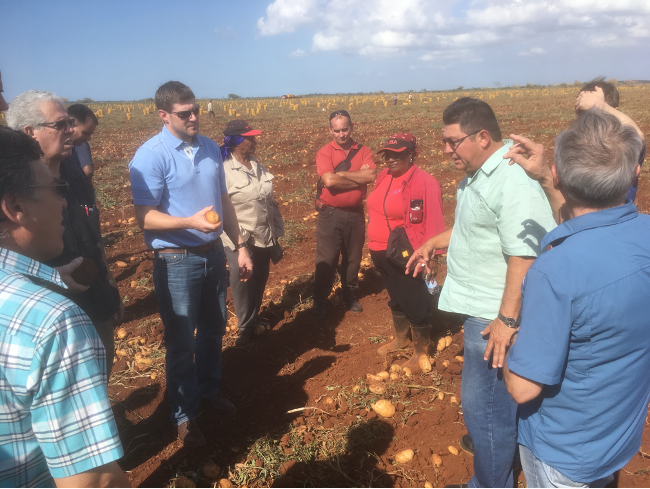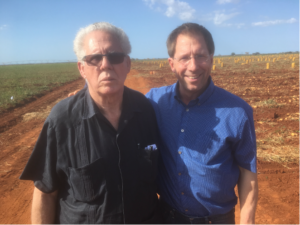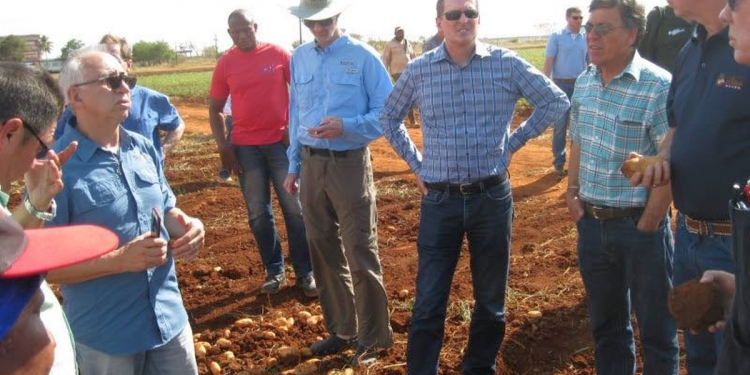Seed potatoes from the United States have not been part of the Cuban cultural story for decades. But now, with the advent of a field trial in Cuba with U.S. seed potatoes, that just might change.

As the third-largest seed potato importer in North America, behind the U.S. and Canada, Cuba provides a large opportunity, which continues to grow. In 2019, Cuba imported 15,292 tonnes of potato seed, similar to Canada’s 17,070 tonnes. Over 99% of Cuba’s seed potatoes are imported every year, largely from Europe.
The need for seed is ongoing. Cuba is located 21 degrees north of the equator and plants nearly all of its seed at less than 300 feet above sea level. The island has an overwhelming quantity of aphids and whitefly due to the lack of cold temperature intervals, which then creates heavy virus pressure for potatoes.
Cuban farmers also have fungal and bacterial diseases to address. Cuban agronomists confide that the yield for saved seed is less than half of imported seed potatoes.
U.S. seed potatoes have several distinct advantages. Some varieties, especially chippers, have been shown time and again to produce well in tropical environments. In addition, the U.S. has dedicated seed growers that produce the highest quality seed potatoes, with a limited number of generations. U.S. seed potatoes can be planted as early as Oct. 1, if necessary, before the planting window for European seed, thus bringing potatoes to the market earlier.
Currently shipping to Cuba is complicated and more expensive than other destinations. Domestic freight to Florida can be high from U.S. seed-producing regions. Few ports are actively engaged in the shipment of goods to Cuba.

Hopefully, freight rates will decrease over time and port options will expand as commerce with Cuba increases. U.S. seed growers are competing successfully in their exports to the Dominican Republic, which is close to Cuba, as evidenced by the 1,000-plus tonnes of seed exports seen since 2018, per interviews undertaken by Potatoes USA.
There have been some changes in the last year that have allowed for trials. A phytosanitary protocol between USDA APHIS and the Cuban Ministry of Agriculture was finally signed in December 2020. This new protocol creates a stable framework of rules that U.S. growers and Cuban importers can finally work with.
Potatoes USA took the first step with a Market Mission Trip in March 2017. Seventeen U.S. potato industry delegates visited with government officials, potato grower enterprises, a potato chip plant, food processing officials and the USDA-FAS. Cuba is unlike any other country in Latin America; all seed potatoes and all agricultural inputs are imported by the government and then sold to grower enterprises.
Additionally, two Cuban delegates visited the U.S. in 2019. The delegates visited certification facilities, mini-tuber production, commercial producers and certified seed potato production in Colorado, North Dakota and Minnesota.
In November 2020, Potato USA shipped 15 tonnes of seed to Cuba. The six fresh market varieties and four chip varieties dedicated for the trial should be harvested this spring.
Planning is already underway for the second shipment of seed in the fall of 2021. The first priority will be to meet the one-year reregistration requirement for “familiar” varieties. The second priority will be to register varieties that were not previously imported, a three-year registration process. As in any new market, it is important to run trials to determine performance in that locale.
The images that we have of Cuba may be changing over the next couple of years.
— John Lundeen is the research director and Peter Joyce the international seed representative for Potatoes USA, the marketing and promotional arm of the U.S. potato industry.








